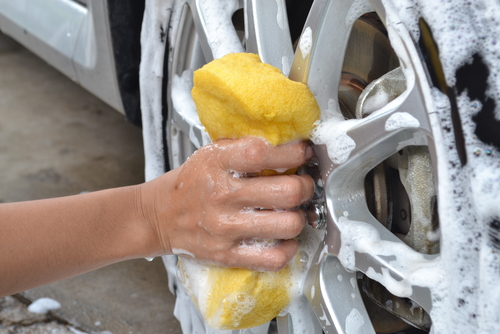Best Ways to Care for Leather Seats and Interiors
Nothing makes a car look and feel as luxurious as leather seats and interiors. Not only does it tend to be a more expensive material to begin with, but it requires regular care and maintenance—both signs that you care about your vehicle and want to maintain its value for as long as possible. When well cared for, leather seats can last for decades, growing softer and more decadent every year. When neglected, they can quickly become cracked, worn, and faded.
The best way to care for leather upholstery is to start a good routine the moment you drive off the lot.
Smart Leather Seat Care
The most damaging thing for leather car seats (not including kids and pets) is the sun. UV damage will speed up the fading and cracking process, so it’s best to avoid it wherever possible. Having tinted windows installed will go a long way in reducing these damages, as well as good care practices like parking indoors or under a cover. By avoiding direct sun as much as possible, you’ll greatly extend the life of your leather seats.
Protective Coatings
If your leather interior is new, then invest in a good protectant before you let anyone inside. Leather conditioner is one of the most popular choices, since it keeps the material moist while also protecting against liquid spills, oil transfer from human skin and hair, and the rays of the sun. (They also smell great and keep the color looking good.)
Conditioners tend to require a few hours to settle into your leather seats and surrounding upholstery, so always plan to let your car rest somewhere dark and cool (and passenger-free) until it has a chance to fully absorb. As soon as it has, wipe away the excess and allow it to dry. These protective coatings will need to be reapplied every three to six months in order to work properly.
Deep Cleaning
If you’re buying a used car or trying to repair older leather, then you’ll want to start with a good deep clean. After thoroughly vacuuming the large collections of dirt, debris, and gunk, you’ll want to wipe the leather down with a specialty cleaner. Always use soft-bristled brushes or microfiber, since anything harsher can scratch or damage the leather. Problem areas in leather tend to be cracks/crevices and any area where skin and hair come in direct contact with the leather. (Be careful when deep-cleaning perforated leather, or leather with small holes in it. These areas can still be cleaned, but avoid liquid cleaners, as it can work into the interior and cause moisture damage.)
Once you’ve cleaned the interior and given it time to dry, apply the leather conditioner of your choice. When done well and when you spot clean problem areas as they arise, you should only have to deep-clean and condition leather seats three to four times a year.



